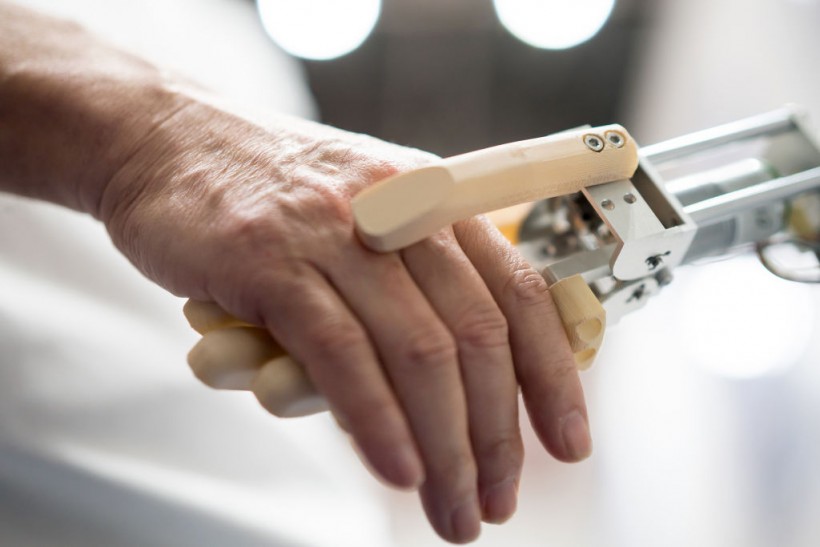A team of roboticists at the University of California San Diego and BASF Corporation has developed a unique 3D-printed soft robotic gripper that operates without the need for electronics. So, how does it work?

TOKYO, JAPAN - OCTOBER 19: An attendee shakes hands with a robotic arm during the Japan Robot Week 2022 event on October 19, 2022 in Tokyo, Japan. The event showcases service robots and robot manufacturing technology and will be held from October 19 to 21.
Ready to Use Soft Robotic Gripper After 3D Printing
Unlike traditional grippers that require additional assembly and processing after 3D printing, this new soft robotic gripper is ready to use as soon as it comes off the printer.
The researchers aimed to create a gripper equipped with built-in gravity and touch sensors, enabling it to pick up, hold, and release objects seamlessly.
"We designed functions so that a series of valves would allow the gripper to both grip on contact and release at the right time," explained Yichen Zhai, a postdoctoral researcher involved in the project.
"It's the first time such a gripper can both grip and release. All you have to do is turn the gripper horizontally. This triggers a change in the airflow in the valves, making the two fingers of the gripper release," Zhai added.
Employing fluidic logic, the robot remembers when its grasp on an object and releases it when detecting lateral weight during rotation. This breakthrough expands soft robotics applications, promoting safe human interaction and delicate object handling.
Moreover, the gripper's versatility allows for mounting on robotic arms in industrial manufacturing, food production, and fruit and vegetable handling.
It proves equally valuable in research and exploration missions, demonstrating remarkable autonomy powered solely by a high-pressure gas bottle, according to the team.
Read Also: 'Chameleon Robots:' These Robots Can Change Colors and Mimic Their Surroundings Through 3D Printing
Novel 3D Printing Method
The team developed a novel 3D printing method to achieve this groundbreaking design. Unlike traditional methods that often result in leaks and defects, their approach involved the printer nozzle tracing a continuous path through each layer, akin to drawing a picture without lifting the pencil off the page, according to Michael T. Tolley, the senior author on the paper and an associate professor in the UC San Diego Jacobs School of Engineering.
This technique not only minimizes the likelihood of leaks but also enables the printing of thinner walls, down to 0.5 millimeters in thickness, resulting in a softer and more deformable overall structure.
Derived from graph theory's Eulerian path, the researchers adopted a printing approach where the trail touches each graph edge only once. Following these rules, they achieved reliable production of functional pneumatic soft robots with embedded control circuits.
This innovative gripper's unique capabilities may hold tremendous potential for industries where robots must handle delicate and complex tasks.
It could represent a major step forward in creating robots that can safely and efficiently work alongside humans, opening up possibilities for new applications and advancements in automation and robotics. The findings of the team were detailed in the journal Science Robotics published on June 21.
Related Article: Chipotle Unveils 'Autocado' Robot Developed by Vebu That Peels and Cores Avocados for Guacamole










